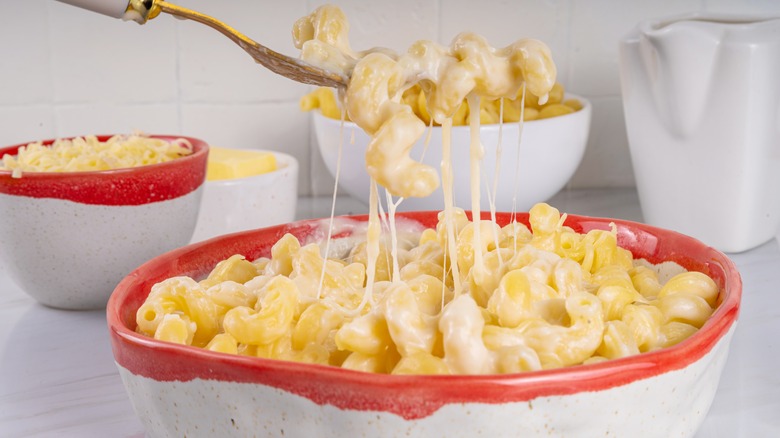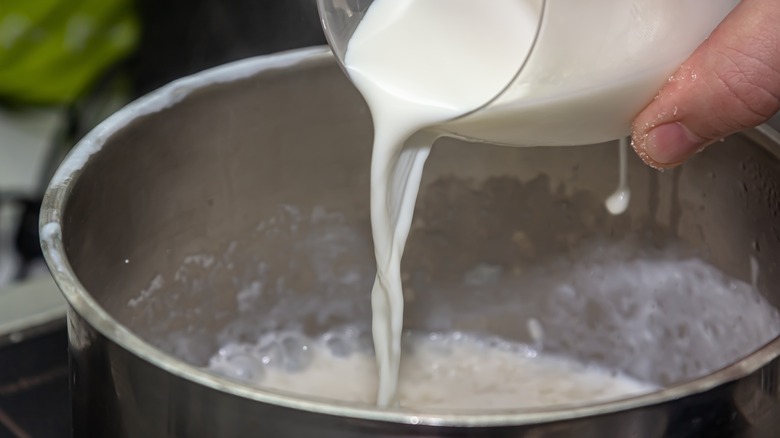Cooking Pasta In Milk Has Its Benefits, But There's A Catch
Here's one chef's secret to great pasta: There are liquids other than water that you can boil your noodles in. Water may be the go-to, but milk takes your noodles to the next level. Cooking pasta in milk creates a luscious, creamy base that transforms into the perfect sauce foundation — no extra thickeners required. The key lies in the science. As pasta cooks, it releases starch into the milk. This starch thickens the liquid naturally, making it silky and rich, almost as if you've already added cream. Think mac and cheese that's unapologetically rich, or fettuccine Alfredo with a next-level lusciousness. The milk seeps into the pasta as it cooks, making every bite taste like it came from a five-star restaurant.
But you can't treat milk like water. Milk demands low and slow cooking to prevent scorching. Scorched milk not only ruins the flavor but also leaves you with a sticky mess that'll test your patience (and your dishwashing sponge). You'll also have to stir early and often to keep the pasta from sticking to the pot.
Milk choice also plays a role in the science. Whole milk is ideal because its fat content helps stabilize the starch and prevents curdling. Low-fat or skim milk has less fat, making it more likely to split under heat. Non-dairy milks add another layer of complexity. Almond milk, for instance, is low in protein and fat, so it won't thicken as effectively. Coconut milk can work in savory dishes, but its strong flavor might overpower delicate sauces.
Tips for keeping milk-cooked pasta silky smooth
The starch-milk interaction that happens when cooking pasta in milk is a double-edged sword. The starch actually can help prevent the milk from curdling, but only if you cook slow enough for the starch to infuse the milk before it gets too hot. This is why low heat and stirring are non-negotiable. Crank the heat too high, and you'll end up with curdled chunks clinging to your pasta. Not quite the smooth, dreamy bowl of noodles you imagined. A steady simmer and frequent stirring will keep the texture right.
You'll also want to avoid overcooking your pasta. You won't be cooking at a full boil when using milk, which means your cook time might increase slightly. Taste your noodles frequently toward the end to make sure they're al dente. And, most importantly, save your starchy-smooth milk to add into your sauce for a restaurant-worthy dish.
Let's talk leftovers. As milk and starch cool down, they form a gluey bond that can make your once-creamy pasta feel like yesterday's soggy oatmeal. To prevent this, toss your cooked pasta with a bit of butter or olive oil before storing it, and add some liquid before reheating. This coating creates a barrier and keeps noodles from sticking together in a clumpy mess. Milk-cooked pasta is a game-changer, but it comes with a bit of babysitting, both during cooking and after. Master these quirks, and you've got a trick that'll make your pasta dishes unforgettable every time.

